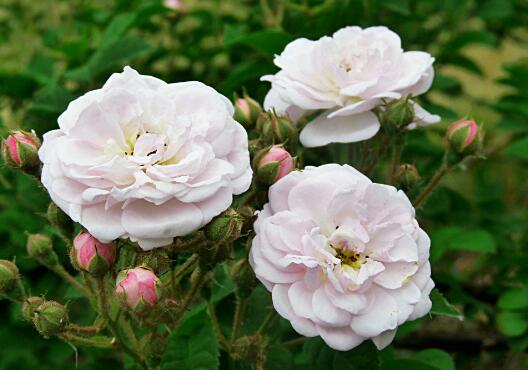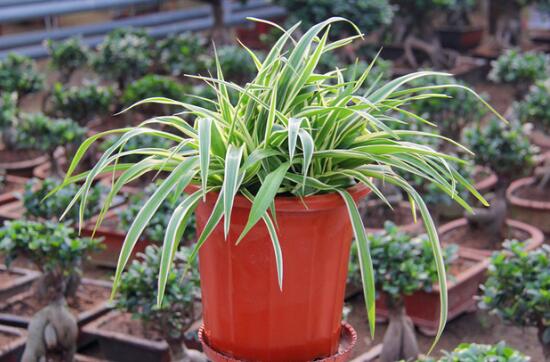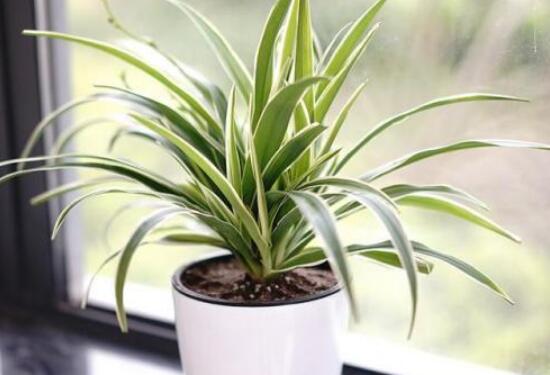How to raise Fujimoto rose, breeding methods and precautions / sufficient light of Fujimoto rose
Fujimoto rose is a well-known plant in the world, which is highly ornamental, and there are many people who raise it in various parts of our country. However, if you want to raise it well, you need to pay attention to a lot of things. About how to raise Fujimoto rose? What are the breeding methods and matters needing attention of Fujimoto rose? Next, the editor will take you to learn about it.
First, how to raise Fujimoto rose and understand its habits

If we want to know how to raise Fujimoto rose, we must first understand its growth habits. This plant likes a sunny and well-ventilated environment, so when we breed it, we should keep plenty of light and the environment must be ventilated so that it can grow better.
II. Culture methods and matters needing attention of Fujimoto rose
1. Soil, rich in organic matter
In terms of soil, Fujimoto rose is not too demanding, but different soils still have a certain impact on its growth. Generally speaking, it is best to choose a slightly acidic soil rich in organic matter and rich in organic matter, which is well drained and nutritious, which can make the rattan rose grow better.
two。 Temperature, 15-25 ℃
In the process of the growth of Fujimoto rose, the ambient temperature is very important, only let it grow at a suitable temperature, it can grow better. Its optimum growth temperature is between 15 and 25 ℃. If the temperature is lower than 5 ℃, it will begin to dormancy, while the flower quality above 33 ℃ will be poor.
3. Fertilizing, do not apply thick fertilizer
As the rattan rose blossoms more, it has a great demand for fertilizer. Sufficient base fertilizer should be applied during the winter dormancy period, regular fertilization is needed during the growing period, topdressing is needed after the full bloom in May, and fertilization should be controlled at the end of autumn. to prevent the autumn shoot from being too prosperous and frost. When applying fertilizer, we should be careful not to use thick fertilizer so as not to burn the plants.
4. Keep plenty of water
During the whole growing period of Fujimoto rose, we need to keep it hydrated from budding to leaf release and flowering, so that it can grow better, and after entering the flowering stage, its demand for water will be higher, and we should always keep the soil moist to ensure that its flowers are fat and bright.
5. Light, shade in summer
Fujimoto rose is a kind of plant that likes light, but it still needs to master a degree when receiving light. If the light is more suitable in spring and autumn, we can let it receive light all day. After entering the summer, because the light is relatively strong, we still need shade at noon.
6. Diseases and insect pests should be dealt with in a timely manner
When we breed Fujimoto rose, if we are not careful enough, it is easy to have diseases and insect pests. This kind of problem is very harmful to the plant, which will not only affect the ornamental, but also lead to the phenomenon of death. Therefore, when there are such problems, we must deal with them in a timely manner. The specific treatment methods have been introduced by the editor in the article on pest control of Fujimoto rose, and you can understand it.
Third, how to prune the Fujimoto rose and reduce the weak branches
In the process of cultivating rattan rose, we also need to prune it regularly to cut off some overgrown branches and some withered, diseased and weak branches, which can facilitate the ventilation and light transmission of the plants. at the same time, it can also play a role in promoting branches.
How to raise Fujimoto Rose Culture method of Fujimoto Rose
Rattan rose is a deciduous rattan shrub of Rosaceae, which is a world-famous ornamental plant. Its elongated climbing branches and dense blossoms are different from the common shrubby rose, so it has high culture value. Next, let's take a look at how to raise Fujimoto rose, how to cultivate Fujimoto rose.
Growth habits of Fujimoto rose
Fujimoto rose has strong adaptability and cold tolerance, and enters dormancy when the winter temperature is lower than 5 ℃. If the high temperature lasts more than 30 ℃ in summer, most varieties will reduce their flowering and quality and enter the state of half rest, and the general varieties can tolerate the low temperature of-15 ℃. Aquaculture requires a slightly acidic soil rich in organic matter, fertile and loose, but has a wide range of adaptation to the soil. The relative humidity of aquaculture air should be 7580%, but it can be slightly dry or wet. It has the characteristic of continuous flowering, and it is necessary to maintain good ventilation and no pollution.
Propagation technique of Fujimoto rose
The cutting of rattan rose is difficult to survive, and asexual propagation methods such as grafting are commonly used for reproduction. most of the grafting propagation methods are rootstocks without thorns, because wild roses can adapt to the harsh environment and are easy to survive, branches, buds and roots can be grafted. Branch grafting should first hide the rootstock sand, bud grafting can be carried out all year round and buds can be grafted at any time, commonly used U-shaped grafting method.
Culture method of rattan rose
1. Soil conditions: planting rattan rose should choose fertile, loose and well-drained soil, and the basin of cultured rose should have holes at the bottom and cushion some gravel to maximize the drainage capacity. Fujimoto rose is not strict on soil, but the slightly acidic soil rich in humus is the best.
2. Lighting requirements: Fujimoto rose likes a sunny and well-ventilated environment, so remember not to breed it in a dark and damp place. In order to avoid the bright light, you can temporarily put it in a shaded place, and pay special attention to shade during flowering, otherwise it is easy to dry up the flowers.
3. Temperature conditions: Fujimoto rose likes to grow in a warm environment, but is afraid of heat. Therefore, the rattan should pay attention to proper shade when breeding in summer this month, and the hot season can be moved indoors, and the most suitable temperature is 22-25 ℃.
4. Water demand: Fujimoto rose likes a warm and humid environment, and the air humidity of 75% to 80% is the most suitable for breeding Fujimoto rose. At the same time, Fujimoto rose can withstand mild drought. Therefore, in the process of breeding, we basically follow the principle of no drying and no watering, and watering time and water quantity need to be implemented according to the drying situation of the soil in the rose basin.
5. Rational fertilization: fertilization is also an important link in the culture process of Fujimoto rose. May is the peak growing season of rose, every 10 days, should be topdressing, fertilizer does not need to be specially purchased, can be used mature fermented fish juice, vegetable leaf juice, etc., the ratio of fertilizer to water is about 3:7, fertilization continues until November.
6. timely pruning: rattan rose has longer vines, which makes it grow freely, which not only does not form, but also affects growth and flowering, so it needs to be attached to a prefabricated support frame to grow. Therefore, one of the tasks of shaping and pruning is to make it grow well on the pre-arranged support frame according to the needs of landscape design, so as to form a unique ornamental shape and achieve the ideal landscape effect.
7. Florescence control: rattan rose is suitable to be planted in different regions of north and south of China. In North China, it generally begins to sprout in mid-March, unfolds leaves in late March, blossoms in mid-May, multi-flowering varieties can bloom repeatedly to mid-November, and gradually shed leaves after frost. The multi-flowered varieties bear fruit after flowering for the first time, and the fruit turns orange or red in November.
Culture methods and matters needing attention of Fujimoto rose
In this month, the vines have different flower patterns, various colors and long flowering period, and the flowers are fragrant, so they are very suitable for potted plants. How will the vines be raised this season? What do you need to pay attention to in breeding? Let's learn about it next.
I. Culture method of Fujimoto rose
1. Soil: potted rattan rose should pay special attention to the change of soil at every stage, usually before new buds sprout in spring.
2. Lighting: Fujimoto rose likes plenty of sunshine. We should have at least 6 hours of light every day in our daily management, otherwise the flowers of Fujimoto this month will not be so beautiful because of the lack of sunshine.
3, temperature: rattan seasonal flowers like a warm climate, the most suitable temperature is 18 degrees Celsius to 28 degrees Celsius, be sure not to be exposed to high temperatures.
4, water and fertilizer: rattan rose watering is very fastidious or dry or wet, for potted vines this month, do not accumulate water in the basin, it will easily make the roots rot, as long as you keep the soil moist.
5. Pruning: before transplanting, rattan rose should first remove old branches, thin and weak branches, damaged branches, disease and insect branches, and prune the roots after digging seedlings, cut off the old roots and diseased roots, and flatten the cross section of the injured roots to facilitate healing.
II. Matters needing attention in Fujimoto rose culture
Fujimoto rose likes daylight, but too much direct light is disadvantageous to bud development, petals are easy to scorch, and high temperature in summer is disadvantageous to flowering. To maintain good ventilation, good drainage and sheltered environment, poor air circulation, easy to suffer from powdery mildew.
In the process of growth, Fujimoto rose needs continuous pruning, to strictly control the growth of plant type, can effectively improve the ornamental value of the plant. In the growing season of the rose. Usually through watering and fertilization, winter rose dormancy, you can dig holes around the seedlings to bury rotten organic fertilizer.
The above is the introduction of Fujimoto rose breeding methods and matters needing attention. Fujimoto rose flowers are very beautiful, with good ornamental value, and it is a good choice to decorate the home.
- Prev

How to water Phnom Penh orchids, the method of watering Phnom Penh orchids / Spring and Autumn 3 Summer 1 Winter 7
As a plant that likes wet environment, Phnom Penh has a great demand for water, so in its growing season, we should water frequently to keep the basin soil moist. However, Phnom Penh hanging orchid avoid stagnant water, so watering can not, otherwise there will be all kinds of problems, then how to water Phnom Penh hanging orchid? To this
- Next

What fertilizer is applied to Phnom Penh orchid? the fertilization method of Phnom Penh orchid / fertile natural fertilizer
Crops a flower, all depends on fertilizer, although Phnom Penh is a foliage plant, beauty does not lie in flowers, but want its leaves to grow Phnom Penh, the right amount of fertilization is very important. As for how to fertilize Phnom Penh orchids, the editor will introduce the fertilization methods of Phnom Penh orchids from the aspects of fertilizer and fertilization interval, which is very comprehensive.
Related
- Fuxing push coffee new agricultural production and marketing class: lack of small-scale processing plants
- Jujube rice field leisure farm deep ploughing Yilan for five years to create a space for organic food and play
- Nongyu Farm-A trial of organic papaya for brave women with advanced technology
- Four points for attention in the prevention and control of diseases and insect pests of edible fungi
- How to add nutrient solution to Edible Fungi
- Is there any good way to control edible fungus mites?
- Open Inoculation Technology of Edible Fungi
- Is there any clever way to use fertilizer for edible fungus in winter?
- What agents are used to kill the pathogens of edible fungi in the mushroom shed?
- Rapid drying of Edible Fungi

